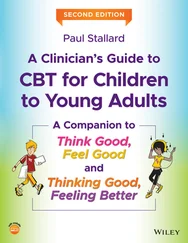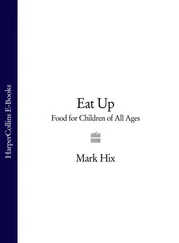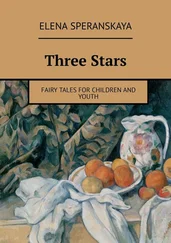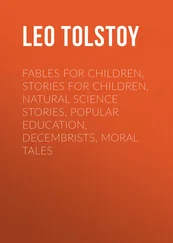14 Pharmacology is:The study of chemical reactions and medicationThe study of how communities respond to the introduction of vaccinationsA branch of science that deals only with the effects of alcohol, nicotine and cannabis on living systemsA branch of science that deals with the study of drugs and their actions on living systems
15 A pharmacist is:A doctor who has a special interest in drugs and medicationsA licensed health professional who prepares, dispenses and advises on medicinal productsA scientist who researches new drugsAnother name for a chemist
The following are a list of conditions that are associated with this chapter. Take some time and write notes about each of the conditions and how they apply to chapter content. Think about the medications that may be used in order to treat these conditions and be specific about the pharmacokinetics and pharmacodynamics. Remember to include aspects of patient care. If you are making notes about people you have offered care and support to, you must ensure that you have adhered to the rules of confidentiality.
| THE CONDITION |
YOUR NOTES |
| Sarcoma |
|
| Attention deficit hyperactive disorder |
|
| Diabetes |
|
| Pneumonia |
|
| Drug overdose on lysergic acid |
|
2 How to Use Pharmaceutical and Prescribing Reference Guides
Claire Pryor, Annette Hand and Elaine Robinson
This chapter aims to introduce the reader to commonly used pharmaceutical and prescribing reference guides and their use in practice. Specific focus is placed on the British National Formulary for children (BNFc) and other reference guides used in clinical practice.
After reading this chapter, the reader will:
Be aware of the different pharmaceutical and reference guides that may be used in practice
Understand how to navigate the BNFc (in both print and electronic formats)
Recognise the different prescribing reference guides available (local and national)
Discuss the benefits of using pharmaceutical and prescribing reference guides in practice
1 How many times a year is the print version of the BNFc updated?
2 Is the information in the BNFc and BNF the same?
3 What schedule of controlled drug is midazolam?
4 What is a GSL medication?
5 Where will you find national prescribing guidelines for managing constipation in children?
The world of medications is vast and learning about them can be daunting for all nursing and healthcare students (as well as registered professionals). The people you care for may have extensive lists of medications you need to be able to review, administer, consider interactions and monitor effects of these.
Professional bodies have specific standards of practice in relation to medicines and pharmacological knowledge and this will relate to the practitioner’s role. The Nursing and Midwifery (NMC) code (NMC, 2018a) states in standard 18 that nurses and nursing associates must
Advise on, prescribe, supply, dispense or administer medicines within the limits of your training and competence, the law, our guidance and other relevant policies, guidance and regulations
(Nursing and Midwifery Council, 2018a)
Further guidance is issued for nursing associates: the NMC stipulates the requirement for nursing associates; as per section 3:16 of their standards of proficiency they must:
demonstrate the ability to recognise the effects of medicines, allergies, drug sensitivity, side effects, contraindications and adverse reactions
(Nursing and Midwifery Council, 2018b)
In order to fulfil these requirements, healthcare professionals must have a level of pharmaceutical knowledge and an awareness of how to and where to find appropriate information to support practice. In a sea of new products and complex regimens, where can you turn to for up‐to‐date, clear and concise information to guide your practice? There are numerous guides, websites, texts and resources that are readily available. Ensuring a robust and evidence‐based selection of these is paramount, but the choice is also personal. Some are web‐based, some print‐based, and the recent evolution of healthcare apps for professionals means that there is a selection for all user preferences.
This chapter aims to introduce you to using pharmaceutical and prescribing reference guides with a specific focus on the British National Formulary for Children (BNFc) and other pharmaceutical reference guides. These guides are vital and valuable resources to draw upon to ensure safe, accountable and evidence‐based care that is matched to the needs and wishes of the people you care for.
You are a first‐year student on your first placement, with your practice supervisor you are assessing a new admission for a 12‐year‐old child with their parents. The parents give you a list of medication their child takes and it has lots of names on it that are new to you. You want to impress your supervisor and find out about them for your next shift. How do you do this? Where do you turn?
Your supervisor suggests you look them up and points you to a paper copy of the BNFc. Upon opening it, it appears confusing, full of sections and symbols, and you are unsure how to find the information you need.
Open a paper copy of the BNFc and find the last drug you discussed or saw in practice
Can you locate it in the BNFc?
What form does it come in?
What are the side effects?
Are there any interactions?
Can it be bought at the supermarket?
These are some considerations you may have to think about when supporting children, young people (CYP) and families with medication. Pharmaceutical reference guides will help you navigate this complex process and support your evidence‐based practice.
The British National Formulary and the British National Formulary for Children
Produced by the Joint Formulary Committee, the BNF is one of the most commonly used and reliable sources of information for medication with distinct versions for children and adults: the BNF and the BNF for children (BNFc).The Paediatric Formulary Committee (PFC) takes responsibility for the BNFc content. Ensuring that you use the most appropriate BNF for your practice area is essential as medications, recommendations, licensing, legislation and monitoring differ for adults and children. The BNF is published in paper copy bi‐annually in September and March and the BNFc is published in paper copy once a year in September. There are electronic versions (as discussed later) which are frequently updated, so it is always advisable to use the electronic version to ensure the most up‐to‐date information is accessed. This chapter focuses on the BNFc; the BNF follows the same layout but has additional and different information pertaining to medicines use for adults.
It is important that you use the correct version for your practice. The BNFc holds different and specific information in relation to medication and children. This is not the same as the BNF (which is for use in adults).
The BNFc is an essential tool for all practitioners working with children and young people, it is a repository of almost all drugs that are used in British health and social care settings, and offers comprehensive details on individual medications, groups of medications, uses, side effects and interactions and can assist with decision making. The information provided is sourced from summaries of product characteristics for medications, literature, consensus guidelines and peer review and employs a grading system of A–E and levels of evidence to help readers understand the strength of evidence underpinning the associated recommendations given (Joint Formulary Committee, 2019a).
Читать дальше











